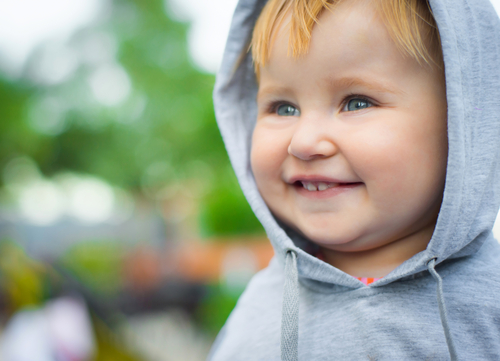Social Anxiety May Be Evident in 1-year-olds With Fragile X
Written by |

As early as 12 months of age, children with fragile X syndrome (FXS) display signs of social anxiety, a study indicates.
The study, “Early behavioral and physiological markers of social anxiety in infants with fragile X syndrome,” was published in the Journal of Neurodevelopmental Disorders.
Anxiety disorders are common among people with fragile X. Social anxiety — where social situations cause a heightened feeling of fear and discomfort — is particularly common, affecting more than half of fragile X patients regardless of sex.
Emerging research suggests that signs of anxiety disorders may be evident in very young children. Better understanding the earliest signs of anxiety could make it easier to identify at-risk children for additional support.
Researchers at the University of South Carolina looked for early signs of social anxiety in 73 children all around 1 year old — 32 with fragile X, and 41 with no known risk factors for social anxiety.
They first surveyed the babies’ parents, using a standardized questionnaire to assess social behavioral inhibition. This inhibition is defined as the tendency for babies to withdraw from all things unfamiliar, and has been linked with social anxiety later in life.
The team also conducted an experiment wherein a “stranger” — a research assistant the baby had not previously met — who would approach the child in the home. These interactions were recorded, and each baby’s response assessed to develop a social behavioral inhibition score.
The parent-reported social behavioral inhibition scores did not differ significantly among the children with or without fragile X.
However, in the observed interactions, babies with fragile X had significantly higher social behavioral inhibition scores. They also spent more time looking at the stranger which, according to the researchers, is indicative of infants responding to a possible threat.
“We report attention bias towards a social threat in the infants with FXS with nearly 50% of their time spent looking toward the stranger,” the researchers wrote.
Differences between the groups were also noted in physiological responses to the strangers. Specifically, the researchers measured respiratory sinus arrhythmia (RSA), a measure of heart and breathing rates that is indicative of activity in the parts of the nervous system that help control fight-or-flight responses.
In typically developing infants, RSA decreased when the stranger approached. No notable decrease was recorded in babies with fragile X.
“Our finding that RSA suppression is reduced in the infants with FXS suggests that this may be a promising biomarker to detect risk for anxiety in this group,” the researchers wrote.
The team stressed that these findings are largely preliminary, and based on data from a small group of children assessed at a single point in time. They also noted that, because this study compared fragile X to children who are apparently developing normally, it’s unclear whether the findings are specific to fragile X or more generally reflective of neurodevelopmental disorders.
A need exists for more research into this area, and into how anxiety in parents might affect anxiety in children, the researchers wrote.





